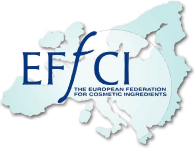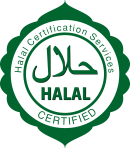5 important tips for formulating with active ingredients
I could start off this article with fast moving trends, seasonal products and too little time for new product developments. As a developer you know this challenge and you can handle it. In most cases, the solution is a kind of modular design, according to the motto: «Never change a winning team».
The fact that this type of development nevertheless generates some challenges is often forgotten. Especially when active ingredients are to be used, exchanged or even combined in a product.
The development work becomes much easier if the INCI of the active ingredient is considered. In most cases, an active substance does not only consist of a single component, but also contains carrier materials and/or auxiliary substances in addition to the lead substance.
Therefore, I would like to give you some advice on how to formulate using our active ingredients as examples. Of course, these general points apply to all active ingredients and can generally help you in your quest for the perfect product.
The following 5 factors are very important when formulating with active ingredients:
Active ingredients such as DermCom and Vin-upLift are based on Acacia Senegal Gum and Caesalpinia Spinosa Gum respectively. Gums are thickeners and influence the product consistency. Therefore, I know in advance that I must reduce or eliminate the thickener already present in the formulation if I want to maintain the product viscosity.
Raw materials, such as non-ionic surfactants, have an alkaline pH value. In the manufacturing process, the pH value of the semi-finished product can fluctuate considerably. For various reasons, the active ingredient is often added to the water phase right at the beginning, which means that it needs to be able to cope with all pH fluctuations. Active ingredients like InfraGuard are pH sensitive and react with discoloration when changes occur. However, discoloration can be avoided by adding the active ingredient at the end of the manufacturing process, i.e. after the product’s pH has been adjusted.
Algae active ingredients in particular, such as Helioguard 365, contain a very high salt content due to their origin. In the active ingredient manufacturing process, we ensure that the bivalent electrolytes are removed by using a cation exchanger. However, a low concentration of electrolytes is still present. It is therefore important to know which of the raw materials in the formulation could react sensitively to electrolytes in order to make recipe adjustments in advance and avoid incompatibilities.
And last but not least, a look at the manufacturing process. As a rule, the laboratory process and the production process are not congruent. However, the sequence plays a major role in the processing of active ingredients. When incorporating gum-based active ingredients, it is advisable to add them to the water phase and allow adequate time for swelling. Saccharide-based active ingredients, such as the PhytoCellTec™ products, in the water phase can influence the effectiveness of the emulsifier system. For this reason, it is advisable to add them only after emulsification, at 45°C - 50°C.








